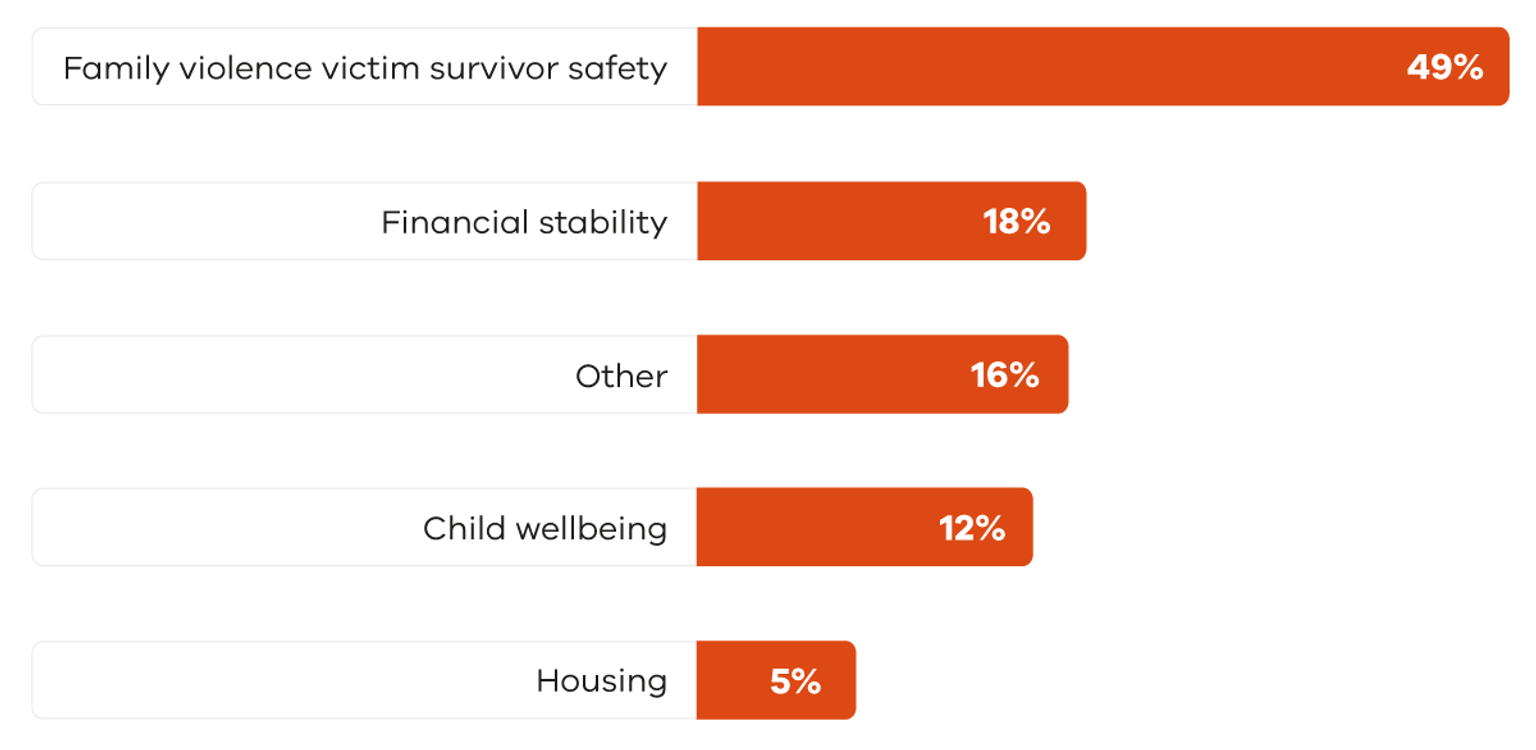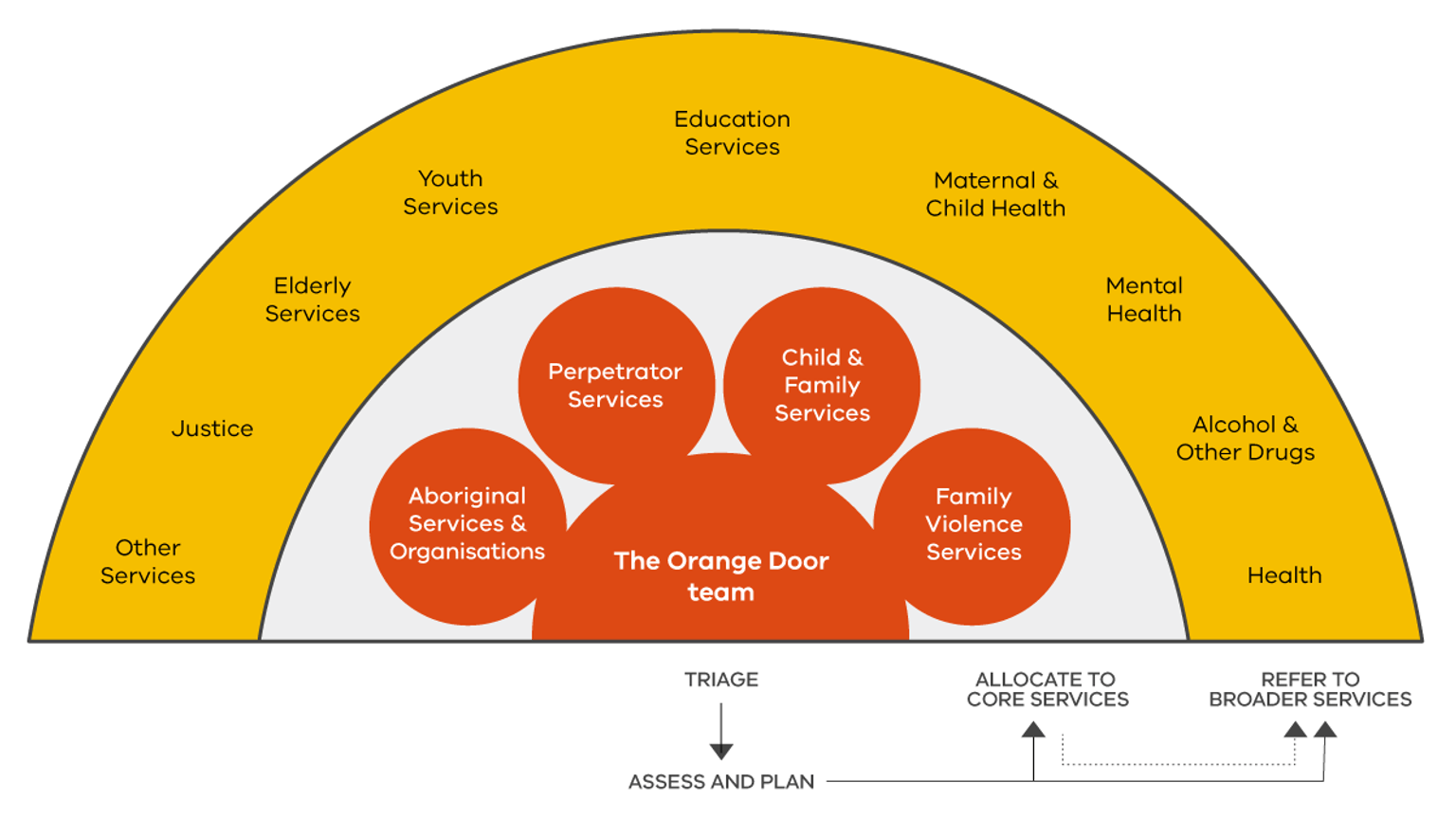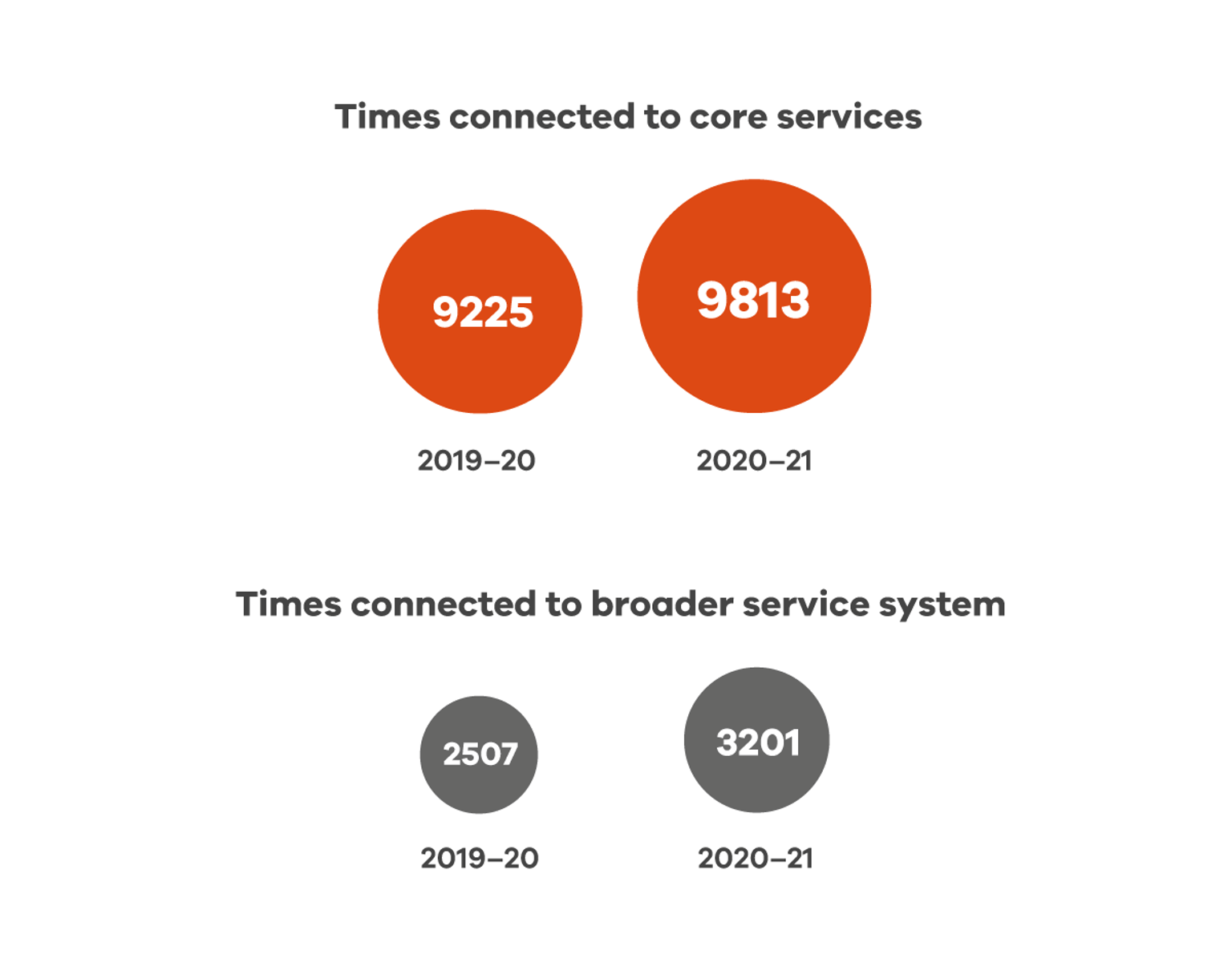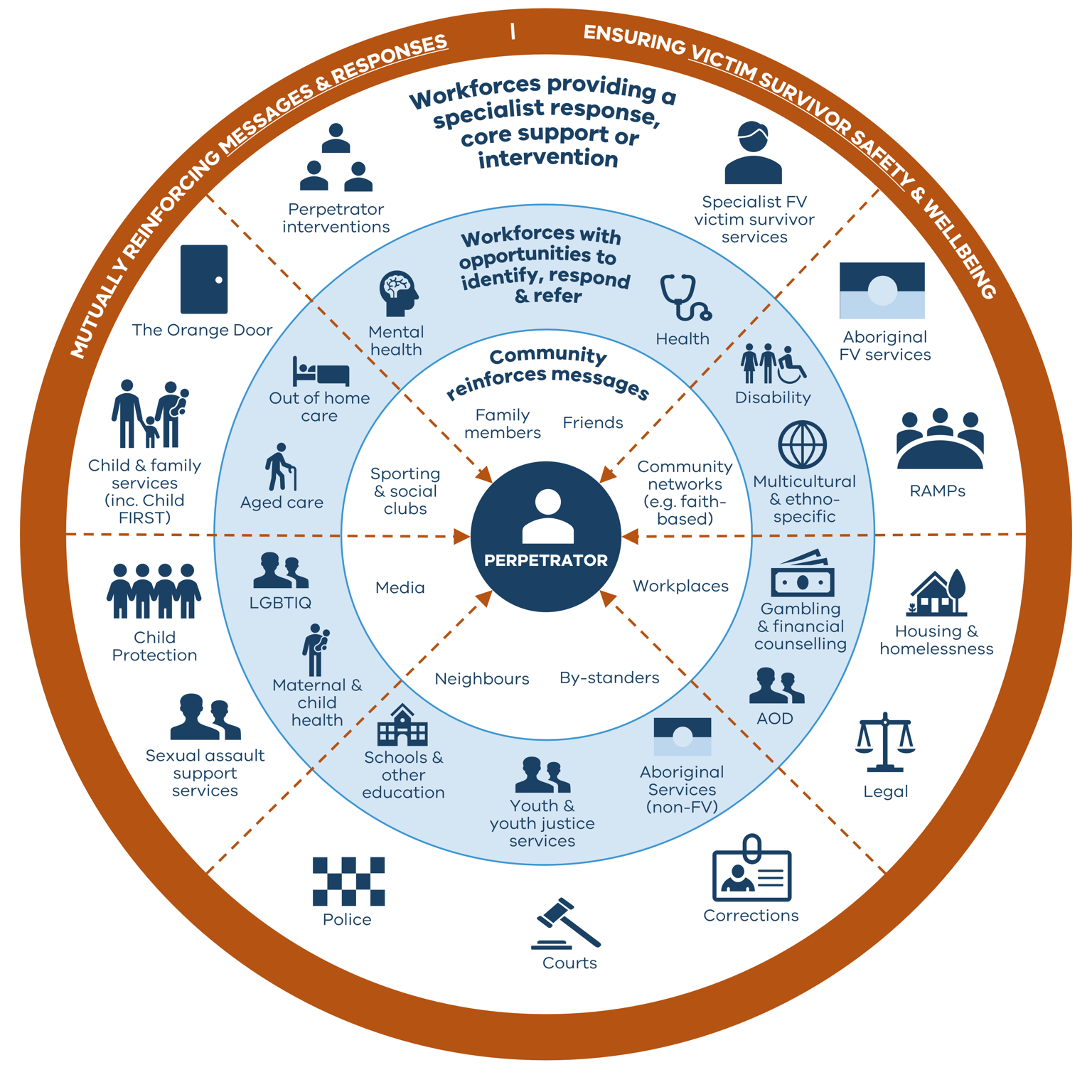What immediate supports does The Orange Door network provide?
The Orange Door network assesses risk and needs, manages risk (including through safety planning), responds to immediate needs, provides brokerage where needed and supports people to get the help they need by connecting them to relevant services for ongoing support.
The Orange Door network provides crisis intervention supported through brokerage funds. Brokerage funds are available to individuals and families accessing services through The Orange Door network, providing quick and flexible support to meet immediate needs and reduce risk.
In 2020-21, The Orange Door network provided 14,616 crisis responses and short-term interventions (a figure similar to 2019-20) and 13,014 connections to services. In addition to this, 3,810 instances of brokerage support were provided an increase of 12.7% (from 3,381 in 2019-20).
A breakdown of the brokerage supports according to the needs identified is provided in Figure 13.[1] Brokerage is often utilised for these needs as it can be activated quickly and is flexible enough to meet the cost required to meet the identified need. Accordingly, brokerage is critical to the provision of direct support to clients of The Orange Door network.
Angela and Maria: coordinating the service system around the family
The Orange Door works with families in a trauma-informed way. Central to this is working in partnership with families and bringing services together to support them in a cohesive, joined up way.
Angela, a young person, and her mother, Maria, were referred to The Orange Door by police following three incidents over a weekend. Angela had repeatedly physically assaulted her mother and home respite services had ceased due to Angela’s behaviour. Due to the escalation of violence, Police had applied for a Family Violence Intervention Order to keep Maria safe.
The Orange Door practitioner contacted Maria and was able to undertake a safety and risk assessment with her. The practitioner developed a safety plan with Maria that incorporated the mental health safety plan that had been developed by the local Child and Adolescent Mental Health Service (CAMHS) with Angela and Maria. The Orange Door also provided brokerage funds to repair damage Angela had caused to the home, installation of a lock on Maria’s bedroom door to support her safety plan and an iPad for Angela to assist with distraction and self-regulation.
Maria stated she did not want to relinquish care of Angela, however articulated feeling conflicted as she felt protective as a parent and fearful as victim survivor. The Orange Door practitioner completed a child wellbeing assessment with a focus on Angela to understand her developmental needs and mental health issues. Given Angela’s positive engagement with CAMHS, it was assessed by The Orange Door practitioner to not directly engage with her at this time. However, Maria gave consent for The Orange Door to work together with CAMHS to support the family.
The Orange Door worked collaboratively with CAMHS, police, ambulance services and Child Protection and a case conference which included Maria was held to develop a management plan to respond to Angela’s escalation of violence and mental health deterioration. Maria gave consent for The Orange Door to share her safety plan and risk assessment, to ensure that all services were informed about the seriousness of the current risk and the actions needed to assist Angela and Maria to remain safe. The Orange Door also supported Maria to advocate for a criminal justice response not to occur, and instead focus on safety and a therapeutic treatment response for Angela.
Maria was referred to counselling by The Orange Door as an ongoing therapeutic support.
Maria told the practitioner that she was confident that Angela will improve and that she will not have to relinquish care of her daughter.
*Not their real names
How is The Orange Door network working to connect people to services?
One of the key functions of The Orange Door network is to connect individuals and families to the services they need. The process of connecting an individual or family to a service is done either by ‘allocation’ to a core service (when a client is provided with a family violence service, family service, perpetrator service or a service from an ACCO) or by a ‘referral’ to broader services when a client is supported to access any other service outside of the core services (e.g. services such as housing or mental health support) (Figure 14).
In 2020-21, The Orange Door network allocated a core service response to people 9,813 times (6.5% increase from 2019-20) and connected people to broader services 3,201 times (28.0% increase from 2019-20) (Figure 15). In total, The Orange Door network made 13,014 allocations and connections in 2020-21, representing a small increase (11.1%) compared 2019-20. This increase is due to the commencement of Orange Door sites in new areas.
The Service System Navigator for each area plays an important role in establishing and maintaining local connections and ensuring strong referral pathways for clients. This work includes strengthening access and responsiveness to diverse communities. In April 2021, legislation was amended to prescribe a wider range of professionals and sectors, primarily across education and health services, to align to the MARAM Framework. This will further enhance collaboration and improve the identification of risk and responses to people experiencing family violence by The Orange Door Network.
Perpetrator accountability and the role of The Orange Door network
In 2020-21, 23,296 cases were recorded with a client role of perpetrator, representing 23.9 per cent of all cases across The Orange Door Network. The family violence service system is progressively increasing its focus on perpetrator accountability and responses to perpetrators are expanding. New perpetrator initiatives have been introduced, including accommodation-based support for perpetrators which aims to keep victim-survivors safe in their own homes.
The Victorian Government’s Family Violence Rolling Action Plan 2020-23 includes a priority focus on perpetrators and articulates a whole-of- Victorian Government work program to strengthen perpetrator accountability. This work is led by, and builds on, the vision of a strong ‘web of accountability’ articulated by the Royal Commission into Family Violence and the Expert Advisory Committee on Perpetrator Interventions (Figure 16). The web includes the people, groups, services, and systems that must work together to form a cohesive system to engage with and influence a perpetrator’s behaviour to achieve perpetrator accountability.
The Orange Door network, enabled by CIP, MARAM and FVISS, plays a critical role in this web of accountability, improving system coordination and the sharing of risk relevant perpetrator information.
Notes
[1] Note that needs identified with small proportions such as Disability, Justice, Alcohol and Drugs have been grouped into ‘other.'
Updated



